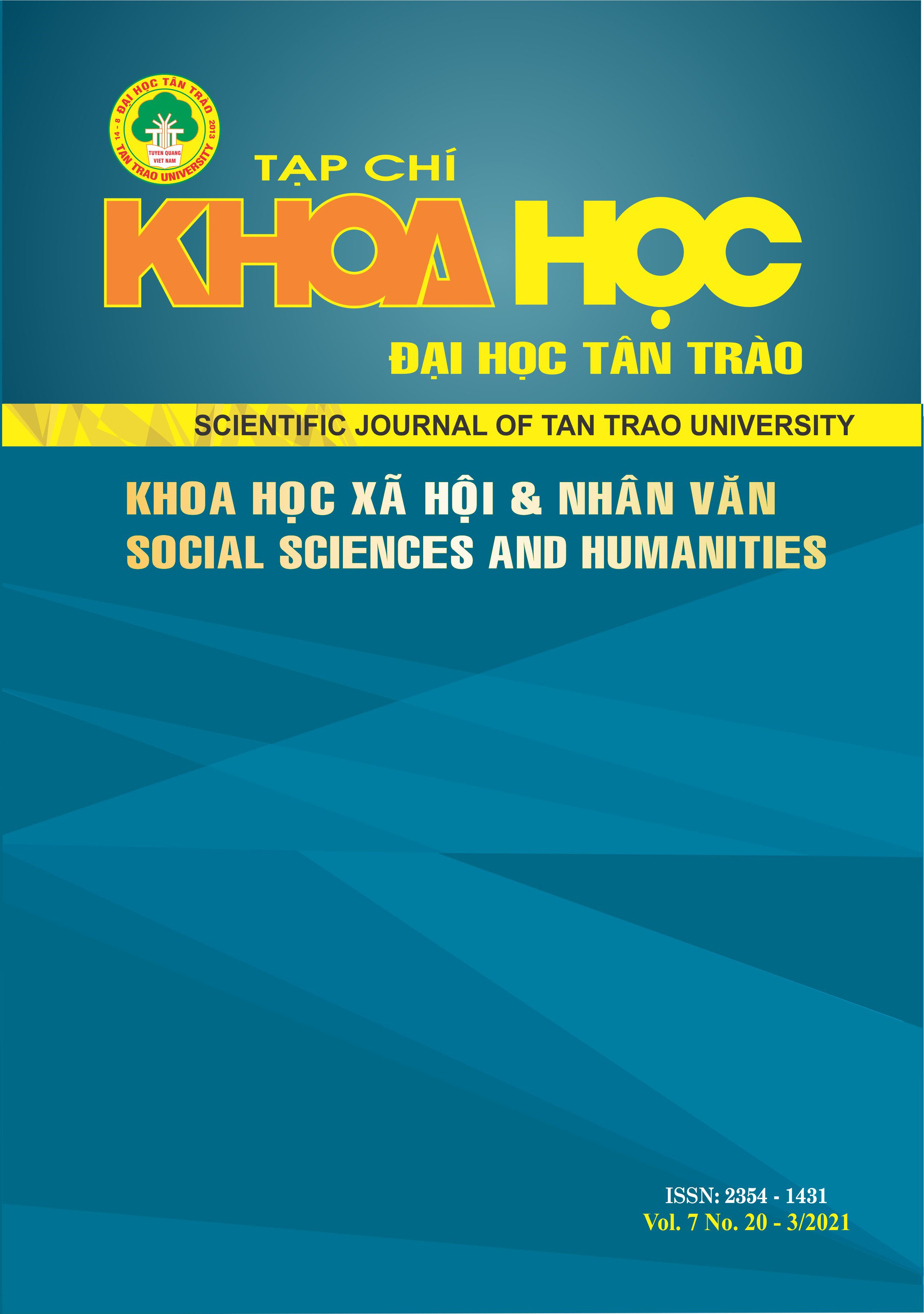ĐỀ TÀI TRANG TRÍ TRONG NGHỆ THUẬT CHẠM KHẮC VÀ TRANH VẼ TRÊN GỖ Ở ĐÌNH LÀNG HÙNG LÔ
DOI:
https://doi.org/10.51453/2354-1431/2021/479Từ khóa:
Äá» tà i trang trÃ, nghệ thuáºt chạm khắc, tranh vẽ mà u trên ván gá»—, đình là ng Hùng Lô, thà nh phố Việt Trì, tỉnh Phú Thá»Tóm tắt
Đình làng Hùng Lô là một trong những ngôi đình lớn có giá trị về lịch sử và giá trị nghệ thuật lâu đời ở Thành phố Việt Trì, tỉnh Phú Thọ. Nơi đây kỹ thuật chạm khắc cũng như vẽ màu trên ván gỗ được xem như linh hồn của ngôi đình cổ có niên đại 1697 (cuối thế kỷ XVII). Khác với những ngôi đình trong toàn tỉnh, đình làng Hùng Lô bên cạnh việc sử dụng các mô típ trang trí về thiên nhiên và những con vật linh để trang trí thì việc sử dụng những hoạt cảnh của con người trong những dịp vui chơi hội hè, múa hát, những đề tài mang đậm tính chất dân gian, làng xã thôn quê được chạm khắc chủ yếu trên kẻ và cốn, đầu dư và vẽ màu trên một số ván gỗ làm đề tài xuyên suốt đã góp phần định hình một phong cách trang trí thuần Việt cho ngôi đình, tạo nên một nét đẹp khác biệt và đa dạng trong nghệ thuật trang trí dân gian ở Việt Nam.
Tải xuống
Tài liệu tham khảo
[1] Department of Culture and Information - Phu Tho (Provincial Museum) (2003), Introduction to the population of cultural and historical relics of Xom temple - Hung Lo commune.
[2] Tan, H.V., Ku, N.V. (2014). Vietnam’s temple, Social Science Publishing House, Hanoi.
[3] Tuan, T.D. (2012). Human image in temple carvings in the Red River Delta region, Dissertation of Theory and History of Fine Arts, Vietnam National Institute of Culture and Arts Studies.
[4] Institute of Fine Arts (1975). Vietnam folk sculpture – 16th – 17th – 18th centuríe, Foreign Language Publishing House - Hanoi.
Tải xuống
Đã Xuất bản
Cách trích dẫn
Số
Chuyên mục
Giấy phép

Tác phẩm này được cấp phép theo Giấy phép Quốc tế Creative Commons Attribution-ShareAlike 4.0 .
Bài báo được xuất bản ở Tạp chí Khoa học Đại học Tân Trào được cấp phép theo giấy phép Ghi công - Chia sẻ tương tự 4.0 Quốc tế (CC BY-SA). Theo đó, các tác giả khác có thể sao chép, chuyển đổi hay phân phối lại các bài báo này với mục đích hợp pháp trên mọi phương tiện, với điều kiện họ trích dẫn tác giả, Tạp chí Khoa học Đại học Tân Trào và đường link đến bản quyền; nêu rõ các thay đổi đã thực hiện và các nghiên cứu đăng lại được tiến hành theo cùng một bản quyền.
Bản quyền bài báo thuộc về các tác giả, không hạn chế số lượng. Tạp chí Khoa học Tân Trào được cấp giấy phép không độc quyền để xuất bản bài báo với tư cách nhà xuất bản nguồn, kèm theo quyền thương mại để in các bài báo cung cấp cho các thư viện và cá nhân.
Mặc dù các điều khoản của giấy phép CC BY-SA không dành cho các tác giả (với tư cách là người giữ bản quyền của bài báo, họ không bị hạn chế về quyền hạn), khi gửi bài tới Tạp chí Khoa học Đại học Tân Trào, tác giả cần đáp ứng quyền của độc giả, và cần cấp quyền cho bên thứ 3 sử dụng bài báo của họ trong phạm vi của giấy phép.






